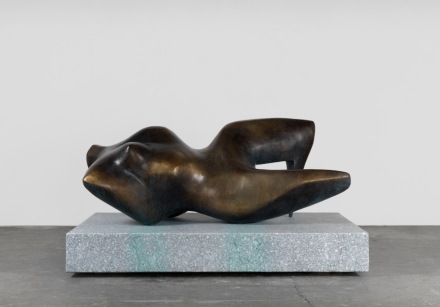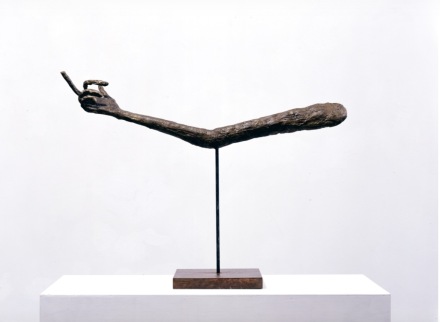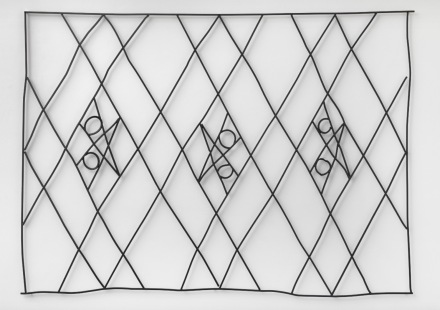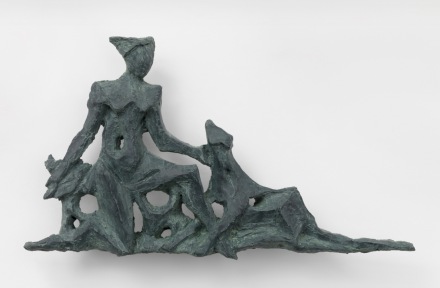
Valentin Carron, 1 2 3 (after Max Weiss) (2015), via Eva Presenhuber
Currently on view at Eva Presenhuber in New York, the gallery is presenting And So America Opened Up, the gallery’s eighth solo exhibition by the Swiss artist Valentin Carron. Carron, whose work is defined by a fascination for modernity and its decay, here presents a series of works created over the past 13 years, unified by studies in modernist history, architectural detail, and the slow stream of history.

Valentin Carron, La Main (2006), via Eva Presenhuber
The artist’s formal vocabulary makes much of its roots in the 20th century, and emphasizes its pervasive quality throughout the fabric of everyday life. The elements that catch Carron’s eye, he finds in his immediate vicinity—in the squares of small towns, in front of administrative buildings of little importance, or rundown public places. These fragments are all replete with potential modernist references. The works on view, accordingly, include reconstructions of modernist reliefs, sculptures, stained glass pieces, a vast ensemble of brass instruments that have been brutally reduced to decorative elements, wrought iron gates, two videos, and a Giacometti-style iconic, provocative hand. The notions of these parts and pieces as unified through an echoing series of references and understandings across time, here finds a striking unity.

Valentin Carron, Abime (2009), via Eva Presenhuber
In this body of work, the dialogue becomes one of structure and image, the exchange between the iconic history of modern art and its remnants in the 21st century, as a body of meanings gradually divorced from its referents, but no less vital. Here, he performs something of a conceptual coup de grace, pulling them fully out of the context of daily life and suspending them in a state of static withdrawal. Looking at the works, it becomes difficult to place exactly when and where they were created; is this a show of historical readymades? Re-created homages? Has the artist merely taken a romantic turn into the glory of the past?

Valentin Carron, Le sarcasme (after Rossi) (2009), via Eva Presenhuber
Any number of conclusions can be drawn here, yet at its core, the show remains one interested in the conceptual progressiveness of the modernists now given way to a merely ornamental nature, as history marches past us. Perhaps illustrating not so much the dustbin of history, but a moodboard, Carron traces time and aesthetics in an era of near limitless visual acuity.
The show closes April 22nd.
– D. Creahan
Read more:
Eva Presenhuber [Exhibition Site]



